Abundance of Raw Materials and New Production Units Drive the Bioplastics Market in Brazil and Mexico
Given Higher Prices, Consumer Perception Important for Widespread Adoption
Both Brazil and Mexico are nascent markets for bioplastics, compared to those in Europe or the U.S. Nevertheless, bioplastics are currently penetrating such segments as food packaging and agricultural films and large production scales in Brazil are expected to give a new direction to this market in the region.
Competitive production scales and rising demand will be crucial to turn bioplastics into a growing and profitable market in the region. Legislation and government incentives for small local companies, still underdeveloped for bioplastics, are also important in this stage of the industry,
In addition, awareness among the end user and final consumer about bioplastics’ positioning in the market will be crucial for the products’ success, especially given the higher prices they command.
Frost & Sullivan expects that bio-based and petrochemical plastics will coexist in the market. However, in the short to medium-term, bioplastics cannot be considered a threat to petrochemicals, as volumes correspond to less than 5 per cent of total demand for plastics.
The Brazilian market for bioplastics shows promising growth projections for the next five years. In 2009, the bioplastics market in Brazil consisted mostly of PLA, starch-based, and PHB resins, representing volumes of 1,286 MT – metric tonnes and revenues of US$4.4 million. For 2015, the bioplastics market in Brazil is expected to reach $618.0 million, with 250,086 MT locally consumed.
Brazil is the world’s leading producer of sugarcane, delivering attractive production costs for this raw material. The constant increase in sugarcane and ethanol production in Brazil will be a competitive advantage for the country to expand bioplastics production based on ethanol. From 2004 to 2009, sugarcane production in Brazil increased at an average annual rate of 9.8 per cent.
The competitiveness of the bioplastics market in Brazil will hinge on product demand, R&D, local infrastructure, and incentives. Private and government investments will grow about 25 per cent by 2013 and by about 35 per cent by 2015.
“Key drivers of the bioplastics market in Brazil include the availability of feedstock and a focus on the carbon footprint among key end-user sectors,” explains Frost & Sullivan Research Analyst Alessandra Lancellotti. “Restraints include crude oil price fluctuations and higher prices compared to that of conventional plastics.”
The Mexican conventional plastics market had a shipment of 4.6 million MT and that of its bioplastics market was equal to 1,200 MT in 2009. The Mexican bioplastics market is in the growth stage in the product life cycle, and the expected average annual growth rate for this market is higher than 20 per cent. Growing environmental awareness in Latin America is a key driver for the market.
Corn-based plastic is the best-known resource in Mexico, but major problems exist because although the country is the fourth largest producer in the world, it still needs to import 5 to 10 per cent to meet local food demand.
“Conventional plastic production companies in Mexico are reluctant to start production, since they are afraid demand will be low,” cautions Lancellotti. “Bioplastics in Mexico is still an emerging market.”
However, both Brazil and Mexico, as top global grains and crops producers, are promising competitive manufacturers for bio-based plastics. This competitive advantage in raw materials, especially for Brazil with sugarcane, is likely to bolster local demand for bioplastics.
Bioplastics production for local and international consumption in Brazil and Mexico benefits from local competitiveness in production and free trade agreements that could easily lead to penetration into major international markets.
Other news from the department business & finance
These products might interest you
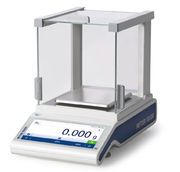
MS-Präzisionswaagen by Mettler-Toledo
Trusted Results at Your Fingertips
Capacity from 320 g to 12.2 kg, readability from 1 mg to 100 mg
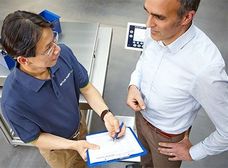
Good Weighing Practice by Mettler-Toledo
Your Concrete Weighing Quality Assurance Plan
GWP Verification service
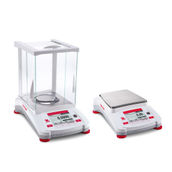
Precision balances by Ohaus
High-performance precision balances for everyday use in laboratories & industry
From milligram-accurate measurement of small samples to routine weighing in the kilogram range
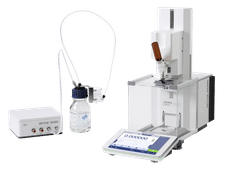
Automatische XPR-Waagen by Mettler-Toledo
Production of standards, samples and concentrations - fast and reliable
Automate the weighing processes in your laboratory - ideal also for sample prep at chromatography
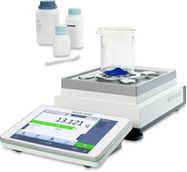
XPR Precision Balances by Mettler-Toledo
Fast and Accurate Precision Weighing Even in Difficult Conditions
XPR Precision Balances / Solutions to support you with data management, traceability and regulatory compliance
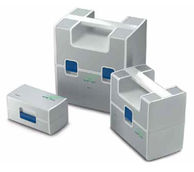
Carepacs by Mettler-Toledo
Professional CarePacs for smooth routine testing
Tweezers, gloves and other accessories for professional weight handling
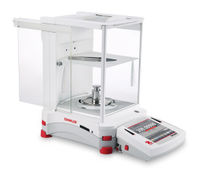
Balances analytiques by Ohaus
Analytical balances with outstanding weighing performance, as easy to use as a smartphone
These space-saving analytical and semi-micro balances are surprisingly intuitive to use

Get the chemical industry in your inbox
By submitting this form you agree that LUMITOS AG will send you the newsletter(s) selected above by email. Your data will not be passed on to third parties. Your data will be stored and processed in accordance with our data protection regulations. LUMITOS may contact you by email for the purpose of advertising or market and opinion surveys. You can revoke your consent at any time without giving reasons to LUMITOS AG, Ernst-Augustin-Str. 2, 12489 Berlin, Germany or by e-mail at revoke@lumitos.com with effect for the future. In addition, each email contains a link to unsubscribe from the corresponding newsletter.


























































